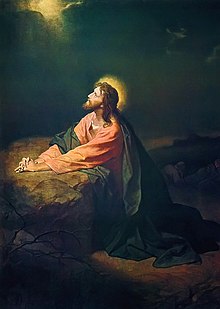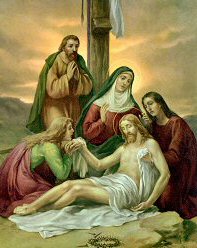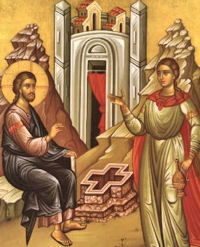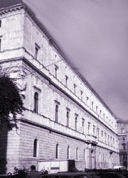Coptic Church recognizes martyrdom of 21 Coptic Christians - Independent Catholic News
| Coptic Church recognizes martyrdom of 21 Coptic Christians | ||||
| Posted: Sunday, February 22, 2015 10:30 pm | ||||
|
| Coptic Church recognizes martyrdom of 21 Coptic Christians | ||||
| Posted: Sunday, February 22, 2015 10:30 pm | ||||
|
 |
| Jesus praying to God the Father in Gethsemane,Heinrich Hofmann, 1890 |
 |
| Santa_Maria_in_Trasteve_Interior_Rome |
 was also the site of key ecclesiastical moments in the Church's history, Good said, explaining that a conclave was held in the church. "When the popes came back from Avignon in 1378 Saint John Lateran had been burnt to the ground twice in 55 years. They came here because this church was still standing. You had some very important ecclesiastics in this church."
was also the site of key ecclesiastical moments in the Church's history, Good said, explaining that a conclave was held in the church. "When the popes came back from Avignon in 1378 Saint John Lateran had been burnt to the ground twice in 55 years. They came here because this church was still standing. You had some very important ecclesiastics in this church." |
| Fifth Station, Simon of Cyrene Helps Jesus to Carry the Cross by Fr. Gabriel, Nunraw Abbey |


 Tuesday of the Fourth Week of Lent Old Calendar: St. Photina (Hist)
Tuesday of the Fourth Week of Lent Old Calendar: St. Photina (Hist)  St. Photina was that Samaritan woman whom our Lord met at Jacob’s Well. When He disclosed the secret of her profligate life, she believed in Him at once as that Messiah which was to come, and began spreading the Gospel among the Samaritans, converting many. Later, she and her son Josiah and her five sisters went to Carthage to preach and then to Rome. Another son, Victor, was a soldier and had already come to Emperor Nero’s attention as being a Christian. The Emperor summoned the whole family and with threats and tortures tried to force them to renounce their faith in Jesus Christ. Meanwhile, when Nero’s daughter Domnina came in contact with Photina (the Lord Himself had given her the name, meaning “resplendent” or “shining with light”), she, too, was converted. The enraged emperor had the heads of the sons and sisters cut off; Photina was held in prison for a few more weeks before being thrown into a well, where she joyously gave her soul to the Lord.
St. Photina was that Samaritan woman whom our Lord met at Jacob’s Well. When He disclosed the secret of her profligate life, she believed in Him at once as that Messiah which was to come, and began spreading the Gospel among the Samaritans, converting many. Later, she and her son Josiah and her five sisters went to Carthage to preach and then to Rome. Another son, Victor, was a soldier and had already come to Emperor Nero’s attention as being a Christian. The Emperor summoned the whole family and with threats and tortures tried to force them to renounce their faith in Jesus Christ. Meanwhile, when Nero’s daughter Domnina came in contact with Photina (the Lord Himself had given her the name, meaning “resplendent” or “shining with light”), she, too, was converted. The enraged emperor had the heads of the sons and sisters cut off; Photina was held in prison for a few more weeks before being thrown into a well, where she joyously gave her soul to the Lord. The Station today is in St. Lawrence's in Damaso—a church built by Pope St. Damascus in honor of the martyred deacon. It was one of the first parish churches in Rome and was rebuilt in the late 15th century by Bramante, and has since been restored several times. Pope St. Damasus' relics are beneath the altar. Today the church is part of the Cancelleria, or the chancery, and houses the Holy Father's Tribunals: the Roman Rota, Apostolic Signatura, and Apostolic Penitentiary.
The Station today is in St. Lawrence's in Damaso—a church built by Pope St. Damascus in honor of the martyred deacon. It was one of the first parish churches in Rome and was rebuilt in the late 15th century by Bramante, and has since been restored several times. Pope St. Damasus' relics are beneath the altar. Today the church is part of the Cancelleria, or the chancery, and houses the Holy Father's Tribunals: the Roman Rota, Apostolic Signatura, and Apostolic Penitentiary.